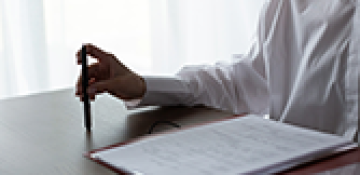Lawyer, graduated from the National University "Odesa Law Academy" with honors. Since 2017, I have been specializing in legal and educational and general legal issues. I am the author of legal articles, scientific publications and articles in the educational environment. Mentor of the "Veritas" legal clinic. The owner of the legal blog "Educational_law_ua" on Instagram.
Patent protection is a key aspect of patent law in Ukraine, as patent owners have the right to exclusively use their inventions and control their use by others. In this article, we will consider the procedure for patent protection in Ukraine, including the actions that patent owners can take in case of infringement of their rights, as well as legal mechanisms for ensuring patent protection.
1. Violation monitoring
The first step in patent protection is monitoring potential infringements. Patent owners must regularly check the market for possible unauthorized use of their inventions. This may include competitor analysis, finding similar products or services on the market, and monitoring publications and patent literature. Of course, it is worth understanding that in such cases you should have certain agreements and contracts available, and if necessary, a legal analysis of the contract for the use of your patent may be required in various situations.
2. Detection and documentation of violations
If the patent owner suspects a violation of his rights, he must collect evidence of this violation. Documentation may include samples of products or services, advertising materials, contracts, and other documents that demonstrate unauthorized use of the invention. This evidence can be used later in the case of a legal proceeding.
3. Warning of the violator
After discovering a violation, the patent owner can send a written warning to the infringer. In this warning, the patent owner can state his claims and demand that the infringement cease. The warning may also contain an offer to enter into a license agreement or resolve the dispute amicably.
4. Legal action
If the infringer does not stop his actions after receiving a warning, the patent owner can file a lawsuit. Litigation is more formal and can require significant time and resources. The patent owner must present evidence of infringement and justify its claims.
5. Court decision
The court examines the case and issues a decision on patent infringement. The court may:
Recognize the violation and impose sanctions on the violator.
Oblige the infringer to stop using the invention.
Assign compensation for damages to the patent owner.
Oblige the violator to reimburse the costs of the court process.
6. Execution of a court decision
After a court decision is issued, the patent owner has the right to demand its execution. This may include the recovery of compensation, the cessation of the infringer's use of the invention, or other measures.
7. Other protection mechanisms
In addition to court measures, patent owners can apply to authorities for dispute resolution, for example, to the Antimonopoly Committee of Ukraine. They may also use alternative dispute resolution mechanisms such as mediation or arbitration.
8. Prevention and strategic planning
Legal analysis of documents by a lawyer or legal analysis of documents in the field of patenting, as well as legal analysis of contracts by a lawyer suggests that in addition to responding to violations, it is also important to engage in prevention and strategic planning to minimize the risks of patent infringement. Patent owners can develop strategies to continuously assess the competitive environment and improve the security and privacy of their inventions. In addition, they may consider entering into confidentiality agreements with their partners and employees, as well as actively patenting key technologies to ensure maximum security. This approach will help patent owners effectively preserve their rights and actively develop their business, minimizing risks and potential losses.
Conclusion
Patent protection in Ukraine requires patent owners to actively monitor and take appropriate measures in case of violation of their rights. It is important to have a clear strategy for patent protection and to contact qualified lawyers when necessary. Effective patent protection helps preserve intellectual property and maintain competitive advantage in the market.





























